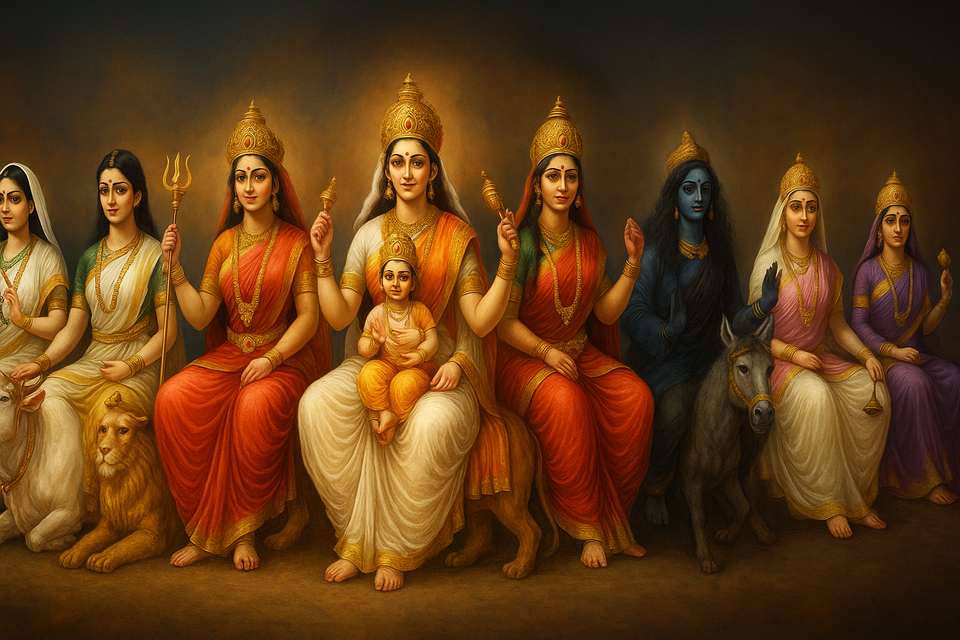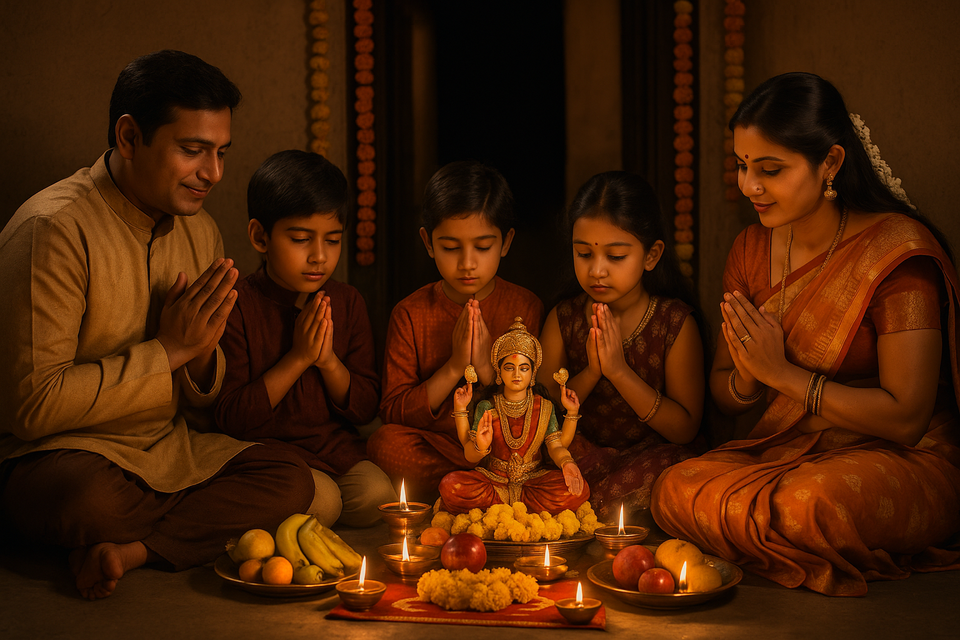Kumbh Mela: The World’s Largest Spiritual Gathering 🌍
Experience Kumbh Mela 2025, the world’s largest spiritual gathering! Learn its history, rituals like Shahi Snan, and how to join the festivities in Prayagraj. Embrace purification and unity! 🙏

Kumbh Mela, the grandest spiritual festival in Hinduism, is a massive pilgrimage that draws millions of devotees, sadhus, and tourists to the banks of India’s sacred rivers for a holy dip. Held every three years, rotating among four sacred cities—Prayagraj, Haridwar, Nashik, and Ujjain—the Kumbh Mela is celebrated every 12 years at each location, with the Maha Kumbh occurring every 144 years. Known for its vibrant rituals, spiritual discourses, and the iconic Shahi Snan (royal bath), Kumbh Mela is recognized by UNESCO as an Intangible Cultural Heritage of Humanity.
For a deeper understanding of India’s rich festival traditions, explore Ancient Festivals of India.
Historical Background of Kumbh Mela 📜
The origins of Kumbh Mela are steeped in ancient Hindu mythology and historical records. The festival’s roots trace back to the Puranas, which narrate the mythological Samudra Manthan (churning of the ocean), where gods and demons fought for the amrita (nectar of immortality). Drops of this nectar fell at four locations—Prayagraj, Haridwar, Nashik, and Ujjain—sanctifying their rivers and giving rise to Kumbh Mela. The term Kumbh (pot) refers to the vessel that held the nectar, and Mela means fair or gathering.
Historical evidence suggests Kumbh Mela was formalized around the 8th century CE, with the philosopher Adi Shankaracharya organizing gatherings of ascetics to discuss spiritual matters. Chinese traveler Xuanzang’s 7th-century accounts describe large congregations at Prayagraj, indicating the festival’s antiquity. By the 19th century, under British rule, Kumbh Mela became a significant socio-religious event, with detailed administrative records noting millions of attendees.
The 2019 Prayagraj Kumbh Mela saw over 240 million visitors, earning a Guinness World Record as the largest human gathering. Its historical significance lies in its role as a spiritual, cultural, and social unifier, drawing diverse communities to sacred rivers every 12 years. 🌊
Mythological and Spiritual Significance of Kumbh Mela ✨
Kumbh Mela holds profound spiritual and mythological importance, embodying themes of purification, salvation, and divine connection. Here are key aspects of its significance:
- Purification through Holy Dip: Bathing in the sacred rivers—Ganga (Haridwar), Sangam (Prayagraj), Godavari (Nashik), or Shipra (Ujjain)—during Kumbh Mela is believed to cleanse sins and liberate devotees from the cycle of rebirth.
- Amrita’s Sanctity: The mythological connection to the nectar of immortality makes Kumbh Mela a time when rivers are imbued with divine energy, especially during astrologically auspicious moments.
- Spiritual Enlightenment: Kumbh Mela is a hub for spiritual discourses by sadhus and gurus, offering devotees a chance to seek wisdom and moksha (liberation).
- Unity in Diversity: The festival transcends caste, creed, and class, uniting millions in a shared quest for spirituality during Kumbh Mela.
- Astrological Alignment: Kumbh Mela is timed based on Jupiter’s transit and the sun’s position, ensuring maximum spiritual potency during key bathing dates.
The spiritual essence of Kumbh Mela lies in its promise of salvation and its celebration of humanity’s divine connection, as reflected in the chant: “Har Har Gange!” 🌼
Cultural Importance of Kumbh Mela 🎭
Kumbh Mela is a cultural phenomenon that showcases India’s rich heritage of spirituality, art, and community spirit. Its cultural significance includes:
- Spiritual Exchange: Kumbh Mela is a melting pot of Hindu sects, from Naga sadhus to Vaishnavites, fostering dialogues on philosophy and mysticism.
- Artistic Expression: The festival features devotional music (bhajans), traditional dances, and vibrant camps adorned with religious art, reflecting India’s cultural diversity during Kumbh Mela.
- Culinary Traditions: Temporary food stalls and community kitchens (bhandaras) serve vegetarian meals, uniting pilgrims through shared feasts during Kumbh Mela.
- Economic Impact: Kumbh Mela generates significant revenue, with the 2019 Prayagraj event contributing over ₹1.2 trillion to the economy, supporting vendors, artisans, and local businesses.
- Global Recognition: UNESCO’s 2017 designation of Kumbh Mela as an Intangible Cultural Heritage highlights its global cultural value, attracting international scholars and tourists.
The cultural vibrancy of Kumbh Mela lies in its ability to blend ancient traditions with communal harmony, making it a unique celebration of India’s spiritual legacy. 🌈
For insights into India’s sacred sites, visit Shiva Temples In India.
Rituals and Traditions of Kumbh Mela 🛕
Kumbh Mela is marked by a series of rituals that blend devotion, purification, and community participation, spanning 45–60 days. Here’s a detailed look at the key rituals of Kumbh Mela:
1. Shahi Snan (Royal Bath) 🌊
The most significant ritual of Kumbh Mela, Shahi Snan involves ceremonial baths led by Naga sadhus and akharas (religious orders) on auspicious dates. Devotees follow, taking dips to cleanse sins, with millions participating at ghats like Triveni Sangam (Prayagraj).
2. Ganga Aarti and River Worship 🪔
Daily Ganga Aarti ceremonies, where priests offer lamps to the river, are a highlight of Kumbh Mela, especially in Haridwar and Prayagraj. Devotees offer flowers and prayers, honoring the river’s divinity.
3. Pitra Tarpan (Ancestral Worship) 🙏
Pilgrims perform Pitra Tarpan, offering water and sesame seeds to ancestors at riverbanks during Kumbh Mela, seeking blessings and salvation for departed souls.
4. Spiritual Discourses and Satsang 📖
Sadhus, gurus, and scholars host satsangs and discourses on scriptures like the Bhagavad Gita and Upanishads, attracting devotees seeking wisdom during Kumbh Mela.
5. Bhandara (Community Feasts) 🍲
Free meals are served at bhandaras organized by akharas and NGOs, feeding millions daily during Kumbh Mela, embodying the principle of selfless service (seva).
6. Processions by Akharas 🏇
Akharas conduct grand processions with sadhus riding horses or elephants, adorned with ash and saffron robes, showcasing their spiritual authority during Kumbh Mela.
7. Yoga and Meditation 🧘
Camps offer yoga sessions and meditation workshops, promoting holistic well-being and spiritual growth during Kumbh Mela, attracting both pilgrims and tourists.
8. Charity and Seva 🤝
Devotees engage in charitable acts, such as donating clothes, food, or funds to the needy, reflecting Hindu values of compassion during Kumbh Mela.
9. Environmental Initiatives 🌱
Recent Kumbh Melas emphasize eco-friendly practices, such as waste management and plastic bans, to protect sacred rivers, as seen in 2019 Prayagraj.
These rituals make Kumbh Mela a vibrant celebration of spirituality, culture, and environmental consciousness. 🎊
Celebrations Across India 🌍
Kumbh Mela is celebrated with immense fervor at four sacred sites, each with unique traditions, and resonates globally. Here’s how it’s observed:
- Prayagraj: The Triveni Sangam (confluence of Ganga, Yamuna, and Saraswati) hosts the largest Kumbh Mela, with the 2025 event expected to draw over 250 million. Key ghats like Dashashwamedh see grand Shahi Snans.
- Haridwar: Held along the Ganga, the 2022 Kumbh Mela featured iconic Ganga Aartis at Har Ki Pauri, attracting millions despite pandemic challenges.
- Nashik: The Godavari River’s banks, including Ramkund, host the Kumbh Mela (next in 2027), with devotees visiting Tryambakeshwara Temple.
- Ujjain: The Shipra River’s ghats, like Ram Ghat, see vibrant celebrations during Kumbh Mela (next in 2028), with Simhastha traditions unique to the city.
- Global Reach: Hindu diaspora in the USA, UK, and Australia follow Kumbh Mela through live-streamed Shahi Snans and temple events, maintaining spiritual connections.
The festival’s universal appeal fosters spiritual unity, drawing diverse crowds to its sacred sites during Kumbh Mela. 🌏
Modern Relevance of Kumbh Mela 🌐
As of June 5, 2025, Kumbh Mela remains a powerful symbol of spirituality, cultural heritage, and global unity, adapting to modern contexts. Its contemporary significance includes:
- Tourism and Economy: The 2025 Prayagraj Kumbh Mela is projected to generate ₹3 trillion, boosting tourism and local businesses, with enhanced infrastructure like tent cities.
- Environmental Awareness: Recent Kumbh Melas prioritize river conservation, with initiatives like sewage treatment and plastic bans, as implemented in 2019.
- Digital Engagement: Live-streamed Shahi Snans, mobile apps, and social media amplify Kumbh Mela’s reach, with X posts highlighting preparations for 2025.
- Interfaith Dialogue: Kumbh Mela attracts global scholars and spiritual seekers, fostering discussions on universal values like peace and compassion.
- Public Health: Advanced medical facilities and sanitation, as seen in 2019, ensure pilgrim safety during Kumbh Mela, aligning with modern health standards.
The festival’s blend of tradition and innovation ensures its relevance, with the 2025 Kumbh Mela set to be a landmark event from January 13 to February 26.
How to Participate in Kumbh Mela 🏞️
Planning to attend Kumbh Mela in 2025? Here’s a step-by-step guide for a meaningful experience:
- Choose a Site: Visit Prayagraj for the 2025 Kumbh Mela (January 13–February 26), focusing on ghats like Triveni Sangam for holy dips.
- Take a Holy Dip: Bathe in the sacred river during key dates (e.g., January 14, Mauni Amavasya), chanting “Har Har Gange” to cleanse sins during Kumbh Mela.
- Perform Pitra Tarpan: Offer tarpan to ancestors at designated ghats, guided by priests, to seek blessings during Kumbh Mela.
- Attend Ganga Aarti: Join evening Ganga Aarti at Triveni Sangam, offering lamps and prayers to the river during Kumbh Mela.
- Visit Akhara Camps: Explore sadhu camps to hear spiritual discourses or witness unique rituals during Kumbh Mela.
- Enjoy Bhandara Meals: Partake in free meals at bhandaras, experiencing the spirit of seva during Kumbh Mela.
- Follow Eco-Friendly Practices: Use biodegradable items and avoid plastics to protect the river during Kumbh Mela.
- Join Cultural Events: Attend bhajans, yoga sessions, or dance performances organized in the Kumbh Mela tent city.
- Share Greetings: Send Kumbh Mela wishes via WhatsApp or Instagram, with messages like “May the Kumbh Mela bring spiritual peace and purity!”
These steps ensure a heartfelt and authentic Kumbh Mela experience. 🎈
Practical Information for Visitors 🌍
Planning to attend the Kumbh Mela in 2025? Here’s what you need to know as of June 5, 2025:
- Best Place to Visit: Prayagraj (Triveni Sangam) for the 2025 Kumbh Mela (January 13–February 26), with key ghats like Dashashwamedh and Sangam Nose.
- Key Bathing Dates: January 14 (Makar Sankranti), January 29 (Mauni Amavasya), and February 12 (Basant Panchami) are prime for Kumbh Mela dips.
- How to Reach:
- By Air: Prayagraj Airport (12 km from Sangam) connects to Delhi and Mumbai; Varanasi Airport (120 km) is an alternative.
- By Train: Prayagraj Junction is a major hub, 7 km from the Kumbh Mela site, with special trains during the festival.
- By Road: NH19 and NH30 connect Prayagraj, with buses and taxis from Lucknow (200 km) or Varanasi.
- Accommodation: Book tent cities, guesthouses, or hotels like Hotel Kanha Shyam in advance due to high demand during Kumbh Mela.
- Etiquette: Dress modestly, remove footwear at ghats, and respect sadhus and rituals during Kumbh Mela.
- Safety Tips: Follow crowd management guidelines, use authorized guides, and carry ID for security checks at Kumbh Mela.
Visiting the Kumbh Mela offers a unique glimpse into India’s spiritual and cultural vibrancy. 🛫
Conclusion 🌄
Kumbh Mela is a monumental celebration of faith, uniting millions in a quest for spiritual purification and cultural harmony. From Shahi Snans and Ganga Aartis to satsangs and bhandaras, Kumbh Mela offers a rich tapestry of rituals that inspire devotion and awe. Its historical, spiritual, and modern significance makes it a global phenomenon, drawing pilgrims and seekers to India’s sacred rivers. Whether you’re a devotee seeking salvation or a traveler exploring India’s heritage, the Kumbh Mela promises an unparalleled experience. Join the 2025 Kumbh Mela in Prayagraj and immerse yourself in the divine flow of spirituality! 🪔





